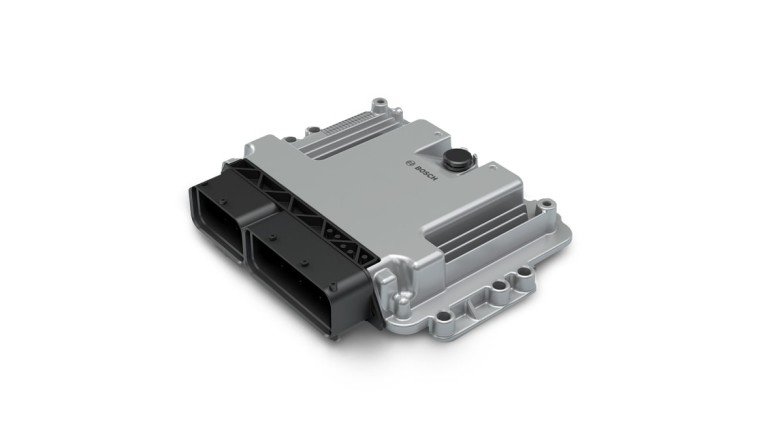The transmission control unit, often called the TCU, plays a crucial role in modern vehicle performance. It manages gear shifts, monitors transmission conditions, and ensures smooth driving. In the USA, where millions of vehicles depend on automatic and semi-automatic transmissions, the TCU is an essential electronic component for reliable and efficient operation.
What Is a Transmission Control Unit?
A transmission control unit in USA is an electronic device responsible for managing the transmission system in vehicles. It works alongside the engine control unit (ECU) to optimize performance, fuel efficiency, and gear transitions. The TCU collects data from sensors, analyzes vehicle speed, throttle position, and temperature, and then determines the right time to shift gears.
Key Functions of a Transmission Control Unit
- Gear Shift Management
The TCU determines when to change gears for smooth acceleration and efficient fuel use. - Data Processing
It processes data from sensors, including engine load, RPM, and vehicle speed, to make real-time adjustments. - Error Detection
The system monitors faults in the transmission and stores diagnostic codes for maintenance. - Performance Optimization
The TCU ensures balanced power distribution for better driving comfort and reduced wear on transmission components.
How Transmission Control Units Work in Vehicles
The TCU communicates with other onboard systems using the Controller Area Network (CAN) bus. It continuously receives sensor signals and sends commands to hydraulic actuators or solenoids that control gear engagement.
Step-by-Step Process
- Sensors measure parameters like vehicle speed and throttle input.
- Data is sent to the TCU for analysis.
- The TCU calculates the ideal gear ratio.
- Commands are sent to the transmission to engage or disengage gears smoothly.
This process happens in milliseconds, ensuring drivers experience seamless gear transitions without manual effort.
Types of Transmission Control Units in USA Vehicles
In the USA, several types of TCUs are used depending on vehicle design and transmission technology.
1. Standalone TCUs
These are dedicated units used in performance and custom vehicles. They provide full control over transmission tuning and calibration.
2. Integrated TCUs
Many modern vehicles combine the TCU with the engine control unit (ECU) into a single powertrain control module (PCM). This integration improves communication and efficiency.
3. Adaptive TCUs
These advanced units learn driving patterns and adjust gear-shift timing based on driving behavior, road conditions, and load.
Common Signs of a Faulty Transmission Control Unit
A malfunctioning TCU can cause significant performance problems. Recognizing early warning signs can help prevent expensive repairs.
1. Erratic Gear Shifting
If the car shifts too early or too late, the TCU might not be processing signals correctly.
2. Transmission Stuck in One Gear
This is known as “limp mode.” It occurs when the TCU detects an internal issue and limits operation to protect the transmission.
3. Delayed or Harsh Shifting
Unusual gear changes may indicate a failing TCU or faulty transmission sensors.
4. Warning Lights on Dashboard
If the check engine or transmission light appears, it often relates to TCU or sensor faults.
Diagnostic and Repair Process for TCUs
In the USA, automotive repair shops use diagnostic scanners to read error codes from the TCU. These codes reveal specific problems that help technicians repair or reprogram the unit.
Diagnostic Steps
- Connect the diagnostic scanner to the vehicle’s OBD-II port.
- Retrieve fault codes related to transmission or communication errors.
- Inspect wiring, connectors, and sensors for damage.
- Reprogram or replace the TCU if needed.
Transmission Control Unit Replacement and Programming
When replacement is required, the new TCU must be compatible with the vehicle’s transmission system. It also needs to be programmed or coded according to the vehicle’s VIN and software specifications.
Reprogramming Process
- Install the new or refurbished TCU.
- Connect to the manufacturer’s software interface.
- Upload the correct transmission calibration data.
- Perform a test drive to ensure proper function.
Maintenance Tips for Transmission Systems
Keeping the transmission system in good condition extends the life of the TCU.
1. Regular Fluid Checks
Transmission fluid should be checked and replaced as recommended by the manufacturer. Low or dirty fluid can cause pressure issues affecting the TCU’s performance.
2. Timely Software Updates
Many automakers release software updates for transmission control systems. These updates improve efficiency and fix known issues.
3. Sensor Inspection
Faulty sensors send incorrect data to the TCU, leading to miscommunication. Routine inspection helps prevent this problem.
To more information Click Here.
The Future of Transmission Control Units in the USA
As the American automotive industry shifts toward electric and hybrid vehicles, TCUs are evolving to handle more advanced systems.
1. Integration with Electric Powertrains
Electric vehicles (EVs) use TCUs to manage motor torque distribution and regenerative braking.
2. Advanced Communication Networks
Modern TCUs now use high-speed networks for instant data exchange between vehicle systems.
3. Predictive Gear Control
AI-based TCUs can predict driver behavior, road slope, and traffic flow to select gears more intelligently.
Conclusion
The transmission control unit is one of the most vital components of modern vehicles in the USA. It ensures smooth gear transitions, better fuel economy, and reliable performance. As automotive technology continues to progress, the TCU’s role will expand, supporting electric and hybrid drivetrains while delivering smarter, more adaptive control systems.
Whether maintaining a family car or a commercial vehicle, understanding how the TCU functions helps owners make informed maintenance and repair decisions.
